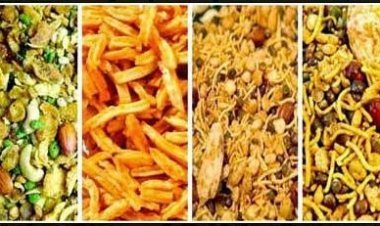Pickles Jams Ketchups Sales And Marketing Agency In Mumbai And Pune
There are many varieties of fruit preserved globally, distinguished by method of preparation, type of fruit used, and place in a meal. Sweet fruit preserves such as jams, jellies and marmalades are often eaten at breakfast on bread or as an ingredient of a pastry or dessert, whereas more savory and acidic preserves made from "vegetable fruits" such as tomato, squash or zucchini, are eaten alongside savoury foods such as cheese, cold meats, and curries.

There are many varieties of fruit preserved globally, distinguished by method of preparation, type of fruit used, and place in a meal. Sweet fruit preserves such as jams, jellies and marmalades are often eaten at breakfast on bread or as an ingredient of a pastry or dessert, whereas more savory and acidic preserves made from "vegetable fruits" such as tomato, squash or zucchini, are eaten alongside savoury foods such as cheese, cold meats, and curries.
Food & Beverages Sales and Marketing Agency in Mumbai
In general, jam is produced by taking mashed or chopped fruit or vegetable pulp and boiling it with sugar and water. The proportion of sugar and fruit varies according to the type of fruit and its ripeness, but a rough starting point is equal weights of each.In general, jam is produced by taking mashed or chopped fruit or vegetable pulp and boiling it with sugar and water. The proportion of sugar and fruit varies according to the type of fruit and its ripeness, but a rough starting point is equal weights of each.
Another one is pickles. Raw mango pickle is fiery and sometimes sweet and sour. We will talk about raw mango dices that are used by Indian mothers to prepare pickle and panna.Despite using the same main ingredients, the differences in preparation techniques and spices can lead to a wide variation in Indian pickles. A mango pickle from South India may taste very different from one made in North India—the southern states prefer sesame oil and tend to produce spicier pickles, while the northern states prefer mustard oil.
In the United Kingdom, preparations of ketchup were historically and originally prepared with mushrooms as a primary ingredient, rather than tomatoes. Ketchup recipes began to appear in British and then American cookbooks in the 18th century. In a 1742 London cookbook, the fish sauce had already taken on a very British flavor, with the addition of shallots and mushrooms. The mushrooms soon became the main ingredient and from 1750 to 1850 the word "ketchup" began to mean any number of thin dark sauces made of mushrooms or even walnuts.
Many variations of ketchup were created, but the tomato-based version did not appear until about a century after other types. An early recipe for "Tomato Catsup" from 1817 includes anchovies and states:Commercial tomato ketchup has an additive, usually xanthan gum, which gives the condiment a pseudo plastic or "shear thinning" property - more commonly known as thixotropic. This increases the viscosity of the ketchup considerably with a relatively small amount added—usually 0.5%—which can make it difficult to pour from a container. However, the shear thinning property of the gum ensures that when a force is applied to the ketchup it will lower the viscosity enabling the sauce to flow. A common method to getting ketchup out of the bottle involves inverting the bottle and shaking it or hitting the bottom with the heel of the hand, which causes the ketchup to flow rapidly
A technique involves inverting the bottle and forcefully tapping its upper neck with two fingers (index and middle finger together). Specifically, with a Heinz ketchup glass bottle, one taps the 57 circle on the neck. This helps the ketchup flow by applying the correct shearing force. These techniques work because of how pseudoplastic fluids behave: their viscosity (resistance to flow) decreases with increasing shear rate. The faster the ketchup is sheared (by shaking or tapping the bottle), the more fluid it becomes. After the shear is removed the ketchup thickens to its original viscosity.
Ketchup is one of the many products that is leachable, meaning that the water within the product migrates together as the larger molecules within the product sediment, ultimately causing water to separate out. This forms a layer of water on top of the ketchup due to the molecular instability within the product.This instability is caused by interactions between hydrophobic molecules and charged molecules within the ketchup suspension.


 food manic
food manic 



















